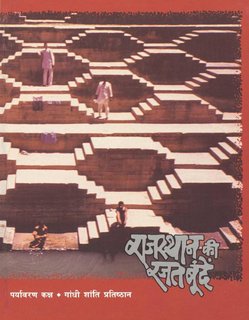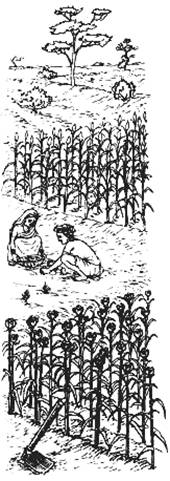Conservation - Reducing Water Usage
Photo essay on water loss due to leaks in Mulbagal, Karnataka
Posted on 25 Oct, 2009 07:58 PMAs I had been waking up to the leaky tap in my new house for quite some time; I thought it would be interesting to look at the different ways water gets wasted. In this post I attempt to do a photo blog from my past photo collections on this subject from different parts of the country.
A leaky tap in a water consultant's bathroom
Posted on 25 Oct, 2009 06:10 PMIts been three weeks since I moved into my new rented apartment. It's a classic situation in which I am caught up in. I am a consultant working on "SUSTAINABLE WATER solutions", but I hardly have control on a leaky tap in my bath room. This leaky tap can fill up a bucket of water in a period of 2 hours. The capacity of my bucket will be around 30 liters.
An integrated framework for analysis of water supply strategies in a developing city - Chennai (India)
Posted on 15 Oct, 2009 09:16 PM This research study, by Veena Srinivasan, addresses the challenge of supplying water to rapidly growing cities in South Asia, using evidence from the water-scarce city of Chennai. Chennai (formerly Madras) is a rapidly growing metropolis of over 6.5 million people, whose infrastructure has not kept pace with its growing demand for water. In the year 2003-2004, Chennai experienced a severe water crisis, the piped supply for the entire city was virtually shut down for a 12-month period. Consumers became dependent on private tanker suppliers trucking in untreated groundwater from peri-urban areas.
This research study, by Veena Srinivasan, addresses the challenge of supplying water to rapidly growing cities in South Asia, using evidence from the water-scarce city of Chennai. Chennai (formerly Madras) is a rapidly growing metropolis of over 6.5 million people, whose infrastructure has not kept pace with its growing demand for water. In the year 2003-2004, Chennai experienced a severe water crisis, the piped supply for the entire city was virtually shut down for a 12-month period. Consumers became dependent on private tanker suppliers trucking in untreated groundwater from peri-urban areas.
Rajasthan Ki Rajat Boondein: A book by Anupam Mishra
Posted on 01 Oct, 2009 11:59 AM In Rajasthan Ki Rajat Boondein, Shri Anupam Mishra documents the myriad, well-organised ways in which the people of western Rajasthan have harvested and managed water over centuries, through work of the utmost dedication, painstaking detail and community-led action. These systems have survived the test of time, and are present in most villages and towns of the desert state even today.
In Rajasthan Ki Rajat Boondein, Shri Anupam Mishra documents the myriad, well-organised ways in which the people of western Rajasthan have harvested and managed water over centuries, through work of the utmost dedication, painstaking detail and community-led action. These systems have survived the test of time, and are present in most villages and towns of the desert state even today.
This path-breaking work in the harsh water-scarce conditions of the desert, was completely managed by the local communities, and serves as a guide to the rest of us, in organising to face and tackle the water crisis, that we face across the world today.
Shri Anupam Mishra has worked in the field of environment and water conservation for many decades, and is currently with the Gandhi Peace Foundation New Delhi. His books on the work of people/society organising themselves, to harvest and manage water - Aaj Bhi Khare Hain Talaab and Rajasthan Ki Rajat Boondein, are considered landmark works in the field, and continue to inspire several individuals even today, to take up work on setting up and reviving such time-tested water harvesting systems.

Brainstorming session on conservation and management of urban lakes in Bangalore
Posted on 29 Sep, 2009 09:04 PMConservation and Management of Urban Lakes
Brainstorming Session on Conservation & Management of Urban Lakes 26th Sept 09
Imagine H20: Water efficiency business plan competition
Posted on 27 Sep, 2009 08:27 PM
Imagine H2O is a not-for-profit company with a mission to inspire & empower people to solve water problems
How to create check dams for water conservation
Posted on 15 Sep, 2009 01:07 PMIn addition to controlling gully erosion, check dams also serve to slow the movement of water, allowing increased percolation into the soil. Just above a check dam is a good place to put in a percolation structure. Silt that builds up behind the dam creates good farmland, which can be planted after the rains while it retains moisture. The following series of pictures show one farmer’s success with building a percolation tank just upstream of a series of check-dams.
Pitcher irrigation - A method that uses round earthen containers for growing saplings
Posted on 15 Sep, 2009 11:46 AM It is similar to drip irrigation, but less expensive to install. The pitchers are the round earthen containers used in rural areas for water storage, ranging from 10 to 20 liters in capacity. This kind of irrigation is ideal for spreading plants such as gourd, pumpkin, and melon because few pitchers are needed per unit area. It is also very good irrigation for saplings, promoting deep root growth.
It is similar to drip irrigation, but less expensive to install. The pitchers are the round earthen containers used in rural areas for water storage, ranging from 10 to 20 liters in capacity. This kind of irrigation is ideal for spreading plants such as gourd, pumpkin, and melon because few pitchers are needed per unit area. It is also very good irrigation for saplings, promoting deep root growth.
Agronomic measures in dryland agriculture: An overview
Posted on 15 Sep, 2009 10:39 AM
Soil and water conservation measures consist of agronomical and mechanical methods. Agronomic methods are supported with mechanical measures where land slope exceeds permissible limits and runoff gains erosive velocities.
The following boxes explain the nature of agronomic measures which are essential in inter-bunded or terraced areas. These practices enhance the utility value of all kinds of mechanical structures.





